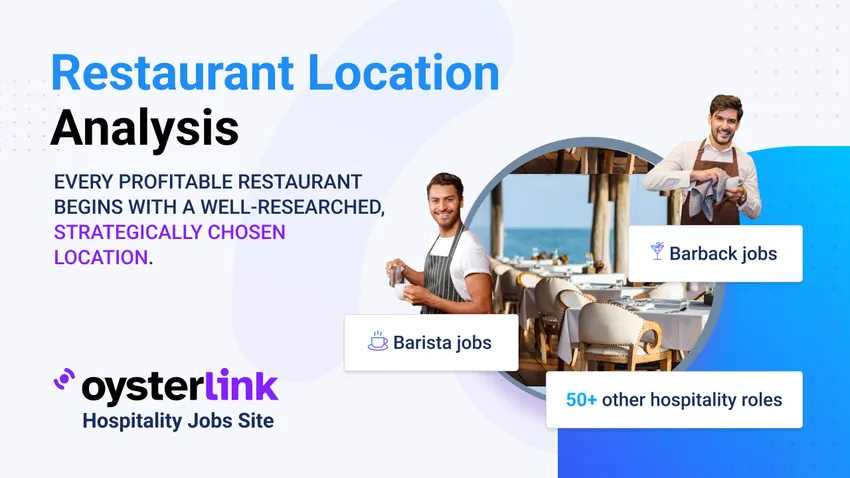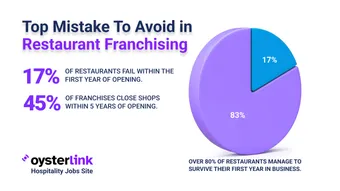Restaurant location analysis is one of the most important — and most overlooked — steps in building a successful restaurant.
This guide walks you through how to assess demographics, competition, foot traffic, and lease terms to choose a location that truly drives profits.
Restaurant Location Analysis: Will It Drive Profitable Traffic?
Every Chef, Manager and owner dreams of packed tables. But even the best concept fails without enough guests. You need a clear method to research if a location will reliably attract a steady flow of customers, not just hope — or guesses.
Your answer determines everything: your daily sales, the kind of staff you need, even survival past the first year. Before you even think about signing a lease, make sure you’ve checked every factor below.
Understanding restaurant owner responsibilities is crucial in this process, as your role demands data-driven decisions from the outset.
Step-by-Step Restaurant Location Analysis
Let’s break down how to evaluate whether a location gives your restaurant the best shot at success. Use these five steps as your working checklist.
Step 1: Evaluate demographics
Start by researching who lives, works and spends time in the area. Look at age, income levels, family size and eating habits. Your concept needs to match what locals crave and can afford.
.png)
Use local census data, city reports and recent demographic snapshots. Example: For a modern Latin-American bistro, are there enough diners with a taste — and wallet — for your menu?
Tip: If you’re comparing two neighborhoods, make a table with key stats (like median income, average age, renter/owner mix). These numbers help you spot areas that match your “perfect customer.”
Step 2: Analyze competition
List all restaurants nearby, then study their menus, price points and popularity. Visit as a guest or read reviews on Google/Yelp to spot what they do well — and where they drop the ball.
For a deeper evaluation, you may consider bringing in a Restaurant Consultant for expert insights tailored to your niche and market.
Map direct competitors and places with similar service models. Look for over-saturated cuisines (like pizza/fast-casual) or obvious “gaps” in the local mix. Use this info to position your restaurant as the go-to spot for something missing.
Step 3: Study foot traffic and accessibility
Visit at various days/times. Use a simple clicker or tracking app to count people walking by your potential door. Check if pedestrian flow lines up with your target service (breakfast, lunch, dinner, weekend brunch).
Assess all access points: Is there easy parking? What’s the walk from transit? How visible is the storefront/sign from the street? Take photos to compare sites later. Good access is especially key if your target guests need parking or plan to meet friends after work.
Tip: You can further enhance your understanding by checking out best practices in restaurant operations management to see how access and flow impact service.
Step 4: Assess costs and lease terms
Know the monthly rent, but also dig deeper: calculate estimated monthly utilities, property taxes, repair fund and any extra fees (like CAM for plazas). Ask about deposit requirements, rent increases and lease length.
Checklist Items: Is there a “good guy clause” (early out)? Are kitchen upgrades needed, and who pays? Are permitted uses clearly defined? (Take screenshots or notes for each location.)
Tip: For those new to negotiations, these insights from financial help resources for restaurant owners might come in handy.
Step 5: Review zoning and regulatory factors
Call your city or county zoning office early. Confirm a restaurant (and any unique features, like a patio or liquor license) is allowed at that address. Ask about hours, signage limits, health inspections, noise rules and fire codes.
Resource: Keep copies of emails and permit questions in a “regulations” folder for fast reference. Borrow forms from other owners if you’re unsure about local requirements!
Tip: If you plan to serve alcohol, reviewing the Bartender job description can help clarify staff and compliance needs in a regulated environment.
Bonus step: Consider growth and neighborhood trends
Look beyond today. Scan for upcoming construction, new employers/offices, or major housing developments. Is this a neighborhood with new apartment projects, or are long-term residents moving away?
Understanding neighborhood cycles is covered in depth in restaurant industry trends, offering data on how local developments can influence success.
Ask local business groups, city staffers and even nearby owners about what’s likely in 2-5 years. Try noting promising trends on a Google Map for future check-ins.
What Data and Tools Do You Need for Restaurant Location Analysis?
Great research means better confidence. Your toolbox should include:
- Demographics: Census.gov, Esri, City-Data for age, education, income, local trends
- Real estate: LoopNet, CREXi, Realtor.com for site inventory and comparable lease rates
- Foot traffic: Placer.ai, mobile heatmaps and manual counts
- Competitor review: Google Maps, Yelp, Chamber of Commerce directories
- Mapping/notes: Google My Maps or color-coded spreadsheets to compare site visits and opportunities
Set up comparison sheets in Google Sheets or Excel. Use columns like “Walk Score,” “Median Income,” “Competing Restaurants (0.5 mi),” “Amenities” and “Renovation Needs.” Upload photos from each visit for a visual reference.
Common Mistakes Restaurant Owners Make When Choosing a Location
Owners often underestimate the competition or ignore practicalities like parking and visibility. Forgetting to check lease fine print or missing neighborhood warning signs (like rising vacancies) can lead to major regret.
For those looking to speed up the hiring process during opening, check out these tips for how to find the best staff for your restaurant as a way to prepare before launch.
Other mistakes:
- Relying on gut feeling alone — always verify with real data!
- Choosing a trendy neighborhood but missing real customer needs (e.g., no parking, few dinner crowds)
- Missing city regulations or waiting too long for critical permits
- Not seeking feedback from other nearby owners or industry mentors
.png)
Build your own red-flag list when touring sites and debrief with a friend or mentor after each visit. It's also wise to regularly revisit the latest advice on restaurant staff hiring to keep your team well-aligned with your concept.
Long-Term Strategies and Adaptations for Restaurant Location Success
Stay active in the neighborhood — host community events, attend business meetups and keep relationships with building managers and other store owners. Tweak menus, hours and marketing if the crowd starts shifting.
Review the numbers at least annually. Are there new competitors? Has foot traffic dipped? Is there an opportunity for delivery expansion or pop-up events during local festivals? Use your original site analysis as a yearly scorecard to stay ahead.
For those considering hiring a Manager to handle evolving challenges, reviewing the requirements in the Restaurant Manager job description can help set clear expectations.
Bonus: Sample Restaurant Location Analysis Checklist
Use this starter checklist to organize your next site visit or compare several properties at once:
- Neighborhood demographics match your ideal guest profile (income, age, lifestyle)
- Direct competitors mapped and reviewed — what’s missing nearby?
- Counted foot traffic during key meal periods (AM, lunch, PM, weekends)
- Easy-to-find parking and/or walkable access to public transit
- Strong visibility and signage potential
- Favorable lease terms (options for exit, who pays for what improvements, rent increases explained)
- Zoning and permit requirements confirmed in writing
- Neighborhood trends positive (new housing, employer growth, not rising vacancies)
- Photos, notes & data saved for later comparison (spreadsheets, annotated maps, etc.)
- Feedback collected from nearby business owners or local business groups
Copy or adapt this checklist for your own “restaurant launch” planning folder.
Remember, the more organized your process, the greater your odds of launching a winning neighborhood spot!





Loading comments...